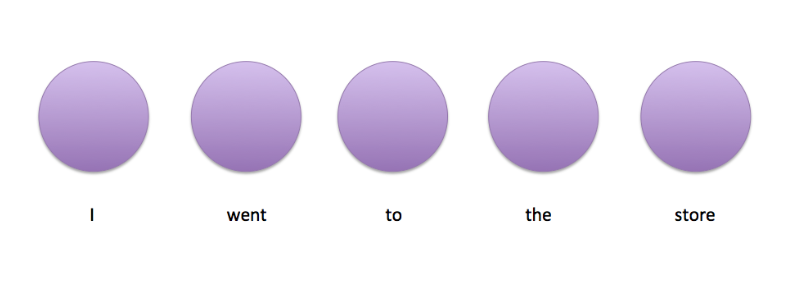By: Lindsay Barret MS, CCC- SLP
A pacing board is a tool that can be used by speech-language pathologists to target a variety of skills. It’s as simple as drawing circles in a row on a piece of paper. Each circle represents a letter, syllable, or word. The number of circles (or your child’s favorite shape/symbol) can vary based on their age, length of the target word, or utterance length. Depending on your child’s reading ability, pacing boards can contain letters, syllables, or words below the shapes. Here is an example:

Who can benefit from a pacing board?
Pacing boards can be used with children and adults with both developmental and acquired communication disorders. They can be used to expand speech and language in length and/ or complexity, promote an appropriate rate of speech, target use of fluent speech, or be used to target production of multi-syllabic words. I use pacing boards to address phonological processes such as final consonant deletion as well, where each symbol represents a letter in the target word. This tool can also be used to promote adequate breath support, in which a symbol on the board serves as a reminder to take a breath.
How is it used?
I start off using a pacing board by modeling the target while pointing to each symbol on the pacing board. As the client’s performance improves, I will fade my cues. After modeling, I have the client produce the target phrase with me as I point. Then, I point while I fade my simultaneous production with the client into a whisper. Next, I will whisper the entire target. I then transition to independent production, making sure the client is able to point to the pacing board as I transition through the process. The last step is, of course, using the pacing board without any pointing and then ultimately, when the pacing board is not present.
I also move through the articulation hierarchy (isolation, syllables, words, phrases, sentences, conversation) and transition from structured to unstructured conversation when addressing articulation with a pacing board. Lastly, I make sure to laminate the board and send a copy home with my clients to promote carryover of the skills addressed in therapy.
Pacing boards are such a simple tool that can be used across a variety of patient populations. Add this to your toolbox and pace your way to success!
To learn more about pacing boards and speech-language therapy, or to set up a consultation with our speech-language pathologists, get in touch with us today!

